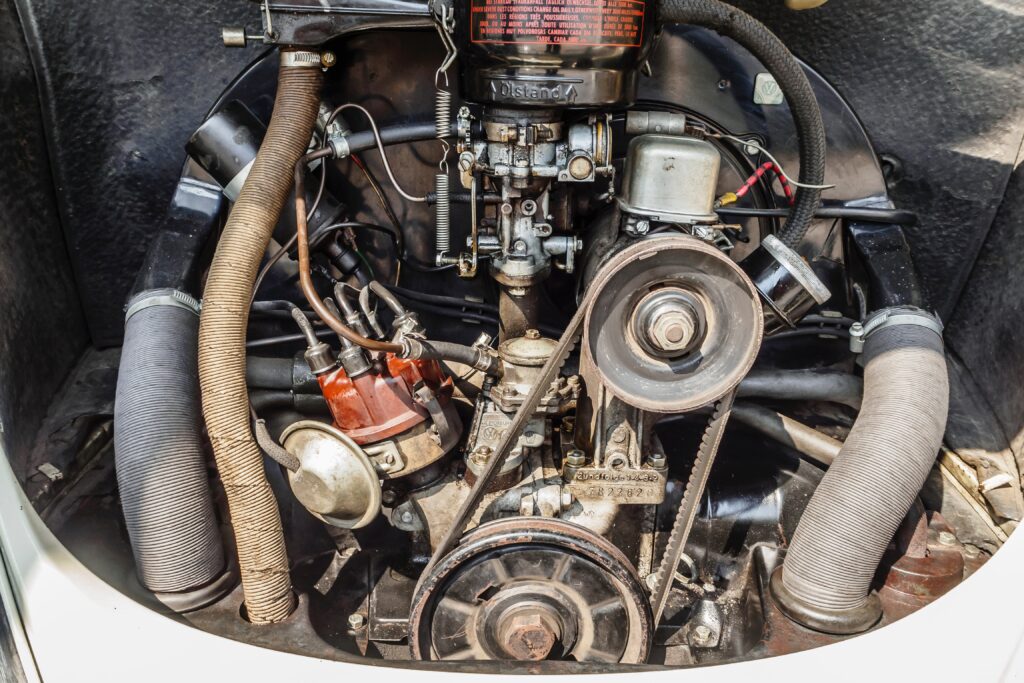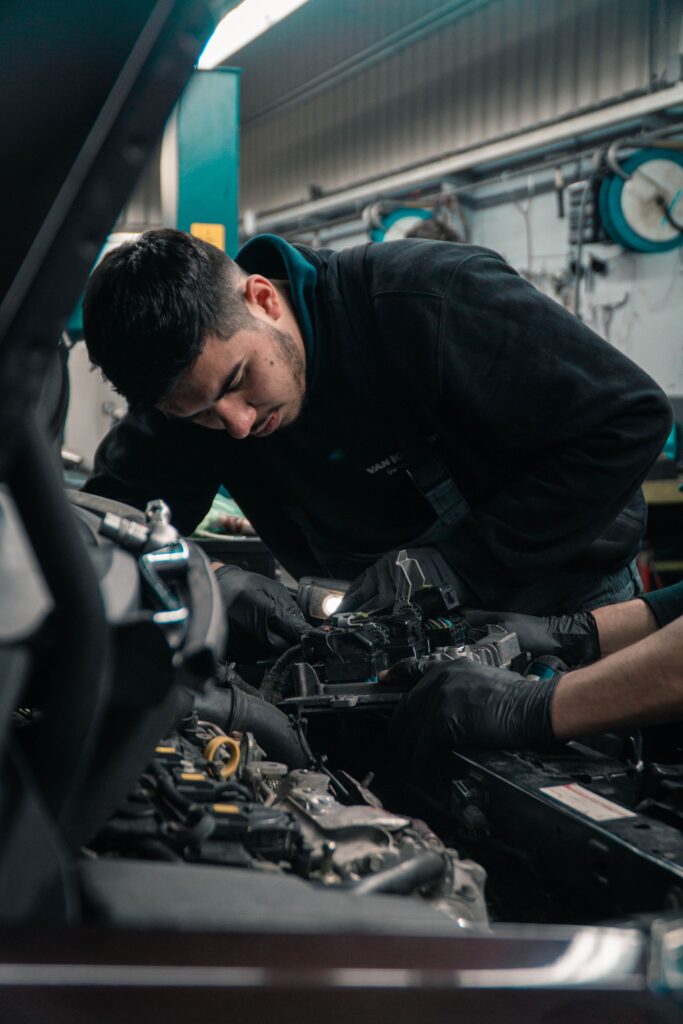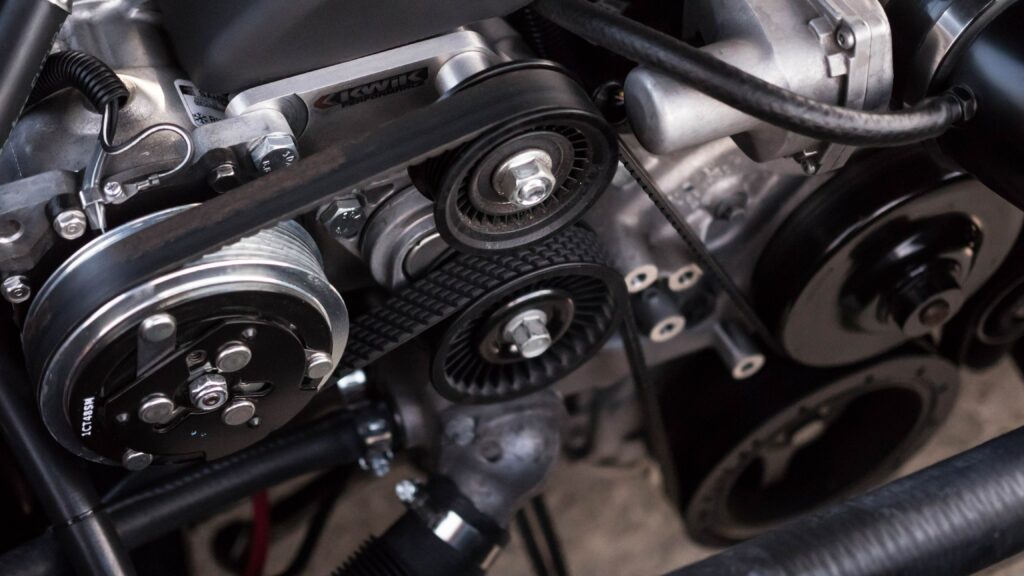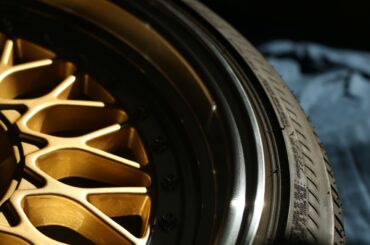Serpentine belts may seem like unassuming components in our vehicles, often hidden beneath the hood. Still, their role in properly functioning a vehicle’s engine is crucial. These unassuming bands of rubber and fabric play a pivotal role in ensuring that various engine components operate harmoniously. In this article, we’ll delve into the world of serpentine belts, exploring their significance and the cascade of events that occur when they unexpectedly break. So, let’s unravel the mystery behind “what happens when a serpentine belt breaks.”
Contents
Understanding the Serpentine Belt
In modern vehicles, the serpentine belt, though often hidden from plain view, is a vital component ensuring various engine systems’ seamless operation. This belt is a continuous, long, and flexible strip made from durable materials, typically rubber-reinforced with layers of fabric. Its name, “serpentine,” derives from its winding path as it snakes around various pulleys in the engine compartment.

The role of the serpentine belt is multifaceted. It acts as a power transmission belt, connecting the engine’s crankshaft to numerous accessories and systems. Through its intricate routing, the serpentine belt drives critical components such as the alternator, which charges the battery and powers the vehicle’s electrical systems, the power steering pump, responsible for making steering effortless, and the water pump, which regulates engine temperature by circulating coolant.
This belt’s design is essential for its efficiency and longevity. Crafted from high-quality rubber compounds, it can withstand the rigors of temperature fluctuations, exposure to various environmental elements, and the mechanical stresses of powering multiple components simultaneously. Its ribbed surface, with grooves and notches, is designed to maintain traction on the pulleys, ensuring reliable power transfer without slipping.
Causes of Serpentine Belt Failure
A. Wear and Tear:
Serpentine belts are stalwart workhorses under the hood but are not immune to the effects of wear and tear accumulating over time. As the engine runs, the belt continuously flexes and moves, gradually deteriorating. The rubber material undergoes stress, leading to microcracks and eventual weakening. Moreover, exposure to extreme temperatures—scorching heat and cold—can accelerate this wear and make the belt more susceptible to damage. The relentless forces acting upon it eventually take their toll.
B. Age and Mileage:
Age and mileage are two crucial factors that influence the longevity of a serpentine belt. Over the years, the rubber compound can degrade, becoming less flexible and more prone to cracking. Similarly, as the miles add up, the belt experiences more revolutions around pulleys, causing gradual abrasion. Manufacturers often provide recommended replacement intervals, typically from 60,000 to 100,000 miles, as a guideline. Adhering to these guidelines can help prevent unexpected belt failures.
C. Belt Tension:
Proper belt tension is paramount for the serpentine belt’s durability and performance. If the tension is too loose, the belt may slip on the pulleys, causing accelerated wear and reduced power transfer efficiency. Conversely, excessive tension can strain the belt, leading to premature failure. Maintaining the correct tension, usually specified in the vehicle’s manual, is essential to ensure the serpentine belt’s optimal functioning and extended lifespan.
Signs of a Failing Serpentine Belt
A. Unusual Noises:
When a serpentine belt is nearing the end of its life or has been compromised, it can produce distinct and unsettling noises. Squealing or screeching sounds are common indicators of belt distress. These noises occur due to the loss of grip between the belt and the pulleys it drives, typically caused by wear, tension issues, or contamination with fluids. Recognizing these sounds while driving or when starting the engine indicates that the serpentine belt may fail.
B. Dashboard Warning Lights:
Failing serpentine belts can trigger warning lights on your vehicle’s dashboard, often related to the battery or engine. The most common light to illuminate is the battery symbol, indicating issues with charging. This happens because the serpentine belt powers the alternator, which charges the battery. The battery may not receive the necessary charge if the belt isn’t functioning correctly. Additionally, engine-related warning lights may appear, signaling potential problems from the belt’s failure. These lights should not be ignored, as they highlight significant issues that require attention.
C. Loss of Power Steering:
A broken or slipping serpentine belt can profoundly impact power steering. Without the belt’s power, the power steering pump ceases to function effectively. This results in a sudden increase in steering effort, making it difficult to maneuver the vehicle, especially at low speeds or when parking. The loss of power steering can affect vehicle control and safety, making it a critical sign of a failing belt.

D. Overheating:
The role of the serpentine belt in powering the water pump cannot be overstated. The water pump is responsible for circulating coolant throughout the engine and regulating its temperature. When the serpentine belt breaks, the water pump stops functioning, reducing coolant circulation. This can result in engine overheating, which, if not addressed promptly, can cause serious damage to the engine components.
E. Electrical System Problems:
Another significant role of the serpentine belt is powering the alternator, which charges the vehicle’s battery and supplies power to various electrical systems. When the belt fails, the alternator cannot perform its function adequately, leading to a drain on the battery. This can cause electrical system problems, such as dimming headlights, flickering dashboard lights, and a dead battery.
What to Do When a Serpentine Belt Breaks
When you find yourself in the unfortunate situation of a serpentine belt breaking, taking immediate action is crucial to prevent further damage to your vehicle and ensure your safety. Here are the steps to follow:
1. Stay Calm: The first and most important thing to do is to remain calm. A broken serpentine belt can cause several issues, but you can minimize the impact with the right response.
2. Pull Over Safely: As soon as you notice the symptoms of a broken serpentine belt, such as loss of power steering or dashboard warning lights, safely guide your vehicle to the side of the road. Make sure to use your turn signals and be cautious of other drivers.
3. Turn Off the Engine: After coming to a complete stop, turn off the engine. This will prevent further damage if the engine continues to run without the serpentine belt.
4. Do Not Attempt to Drive: It’s essential not to drive your vehicle further with a broken serpentine belt. Without the belt, crucial components like the water pump and alternator are not functioning, which can lead to overheating, battery drainage, and potentially more extensive engine damage.
5. Call for Assistance: Contact a tow truck or roadside assistance service to have your vehicle safely transported to a mechanic or repair shop. Attempting to fix a broken serpentine belt on your own, especially on the side of the road, can be challenging and may lead to further complications.
6. Avoid DIY Repairs: While it may be tempting to try a temporary fix, such as using another belt or attempting to reattach the broken belt, it is not recommended. Serpentine belts are complex components that require proper tools and expertise to replace correctly. DIY repairs in this situation can result in additional damage.
7. Inform a Mechanic: Once your vehicle is at the repair shop, inform the mechanic about the symptoms you experienced and the suspected serpentine belt issue. They will inspect the belt and any associated components to determine the extent of the damage and provide a proper repair solution.
Emphasize the importance of safety and professional assistance when dealing with a broken serpentine belt. While it may be an inconvenience, addressing the issue promptly and correctly will ensure the longevity and reliability of your vehicle.
What happens when a serpentine belt breaks
In conclusion, the humble serpentine belt, often hidden beneath the hood, plays a pivotal role in properly functioning a vehicle’s engine. When this unassuming component fails, it can lead to a cascade of issues that impact everything from power steering to engine temperature regulation. To recap the key points:
– A broken serpentine belt can result in the loss of power to critical engine components and accessories, potentially causing overheating, electrical system problems, and reduced vehicle control.
– Recognizing the signs of serpentine belt failure, such as unusual noises, dashboard warning lights, loss of power steering, overheating, and electrical system problems, is crucial for prompt action.

– When a serpentine belt breaks, it’s essential to pull over safely, turn off the engine, and seek professional assistance. Attempting to drive further or perform DIY repairs can worsen the situation.
– Preventive maintenance, including regular inspections, proper tension, cleanliness, and adherence to manufacturer guidelines, can extend the serpentine belt’s life and contribute to your vehicle’s reliability.
In vehicle maintenance and safety, the serpentine belt is an often-overlooked hero. Recognizing its significance and knowing what to do when it shows signs of trouble can save you from unexpected breakdowns and costly repairs and ensure your safety on the road. So, stay vigilant, maintain your vehicle, and take prompt action to keep your engine running smoothly and your journeys trouble-free.
Unlocking the Mystery: What Does It Mean If My Car Starts But Won’t Move? (2023)
What Are the Bad Input Shaft Bearing Symptoms? Important Car Facts for 2023
Too Much Oil in Car White Smoke Coming from Your Car? Possible Problems in 2023





